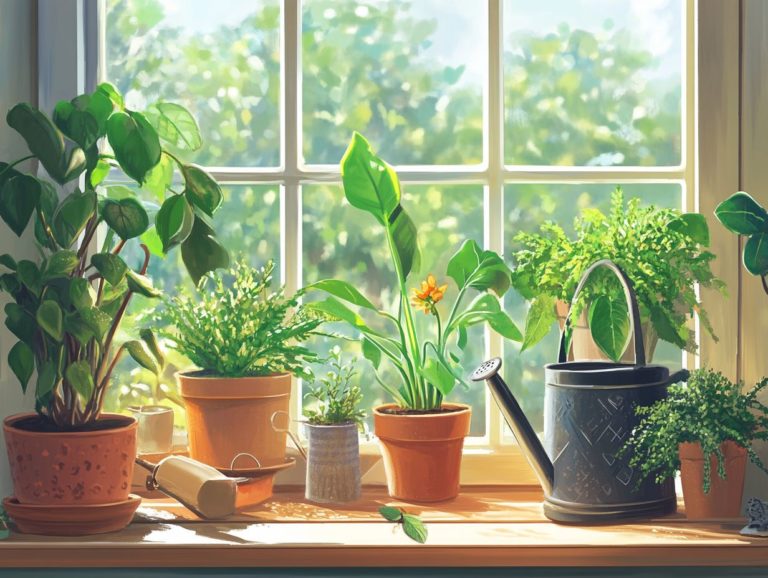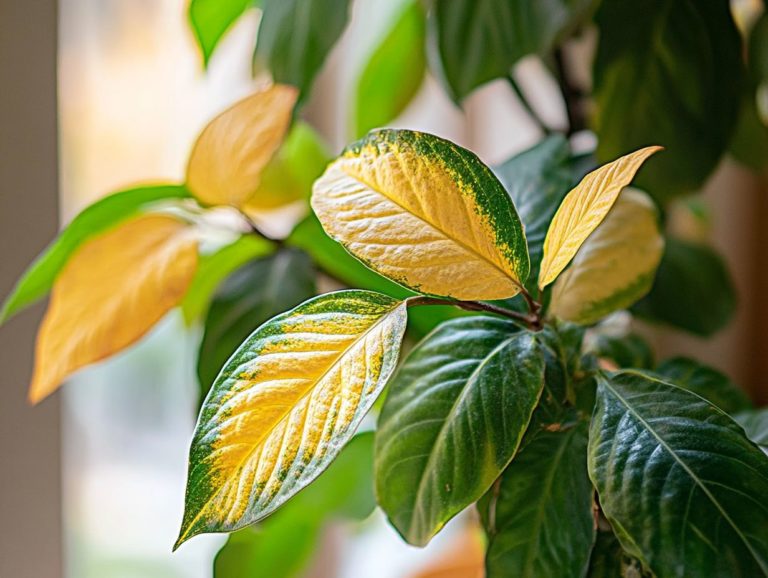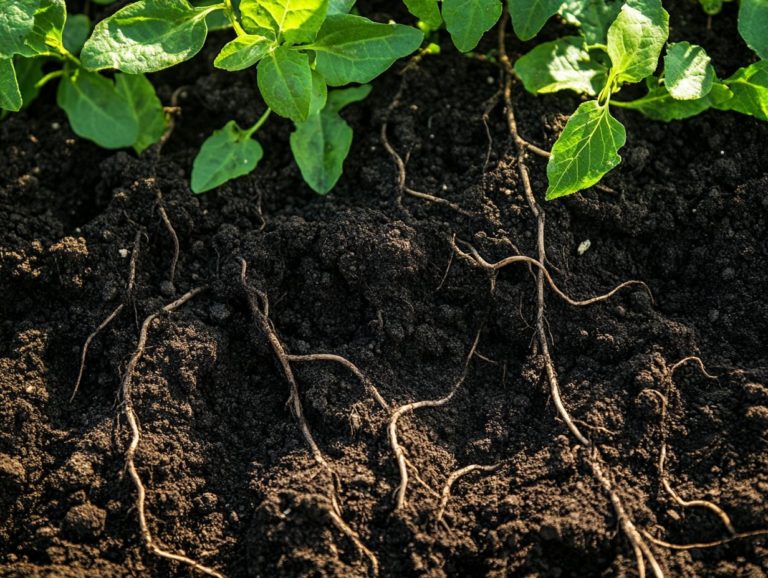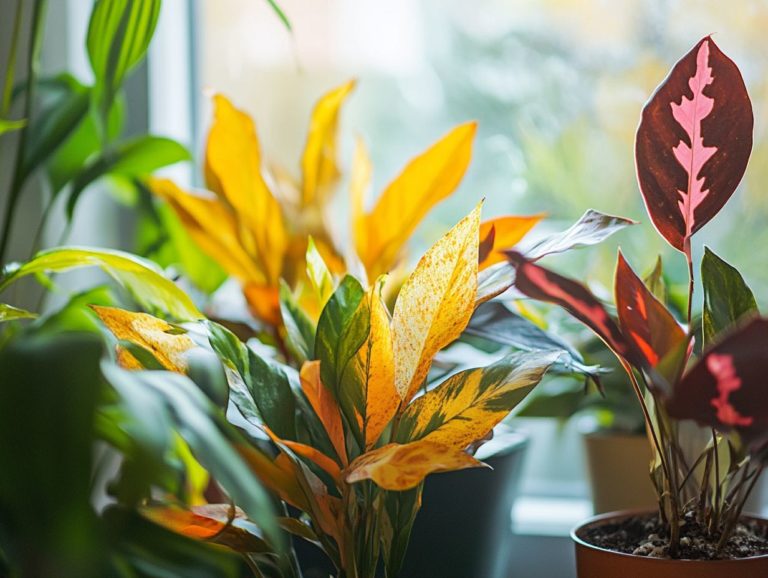How to Handle Indoor Plant Pest Infestations
Indoor plants infuse your home with beauty and vitality, yet they can also attract a variety of unwelcome houseplant pests.
Understanding these intruders is essential for maintaining the health of your cherished greenery. This article takes you on a journey through the most common types of indoor plant pests, including spider mites, scale insects, and mealybugs. Don t wait! Act now to protect your plants and learn how to identify and assess infestations, as well as effective prevention strategies.
You ll also discover practical tips for treating infestations and ensuring long-term pest management. Say farewell to those uninvited guests and keep your plants flourishing with effective pest control methods!
Contents
- Key Takeaways:
- Understanding Indoor Plant Pests
- Identifying and Assessing Infestations
- Preventing Indoor Plant Pest Infestations
- Treating Indoor Plant Pest Infestations
- Dealing with Recurring Infestations
- Frequently Asked Questions
- What are common signs of an indoor plant pest infestation?
- How can I prevent indoor plant pest infestations?
- What are some natural methods for handling indoor plant pest infestations?
- What should I do if my indoor plant is infested with pests?
- Can I use chemical pesticides to handle indoor plant pest infestations?
- How can I prevent indoor plant pests from spreading to my other plants?
Key Takeaways:
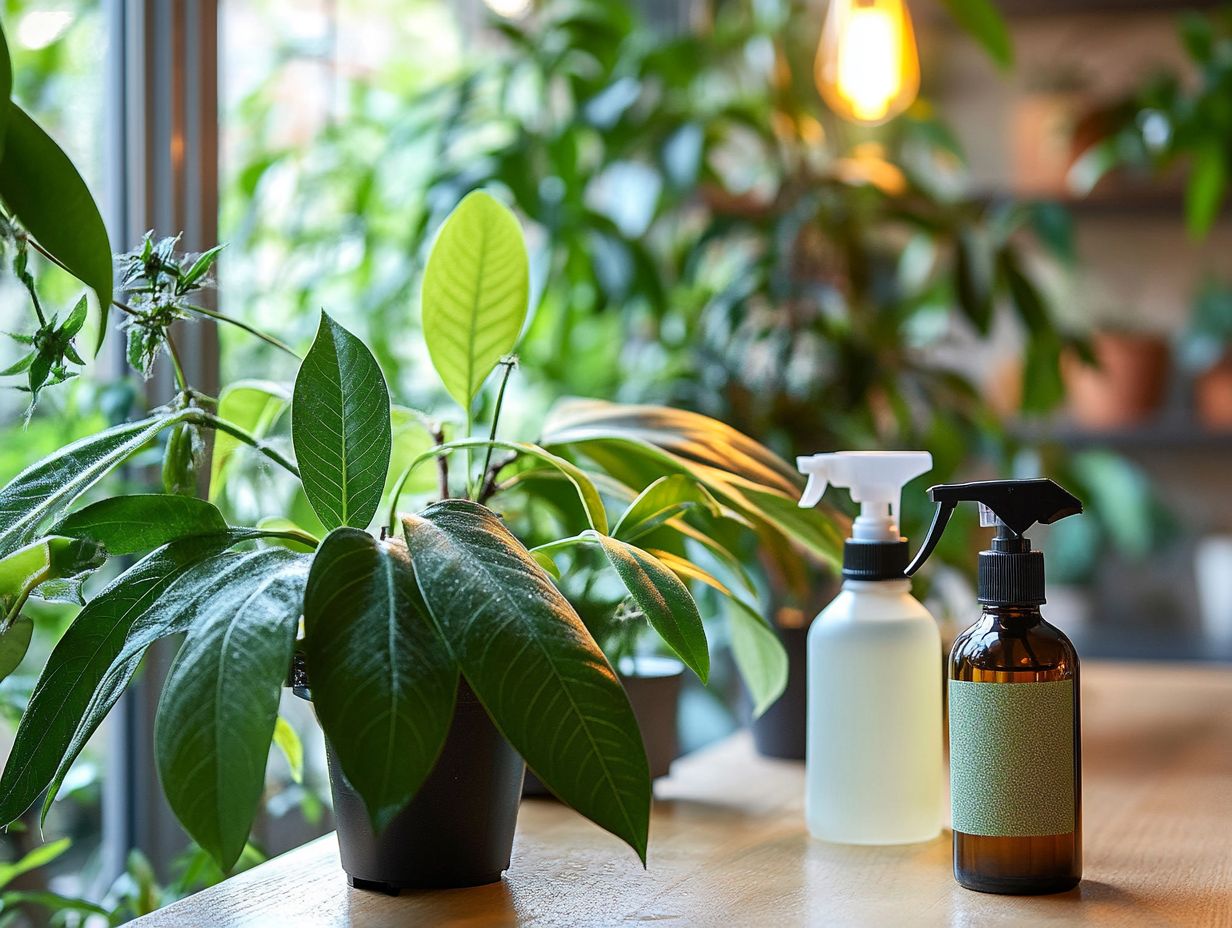
- Regularly inspect your indoor plants for signs of pest infestations to catch them early and prevent further damage.
- Implement preventive measures such as keeping plants healthy, using natural pest repellents, and quarantining new plants to avoid pest infestations.
- If infestations do occur, choose the appropriate and safe pest control method based on the type of pest and severity of infestation.
Understanding Indoor Plant Pests
Understanding indoor plant pests is crucial for any houseplant enthusiast. These unwelcome guests can seriously affect the well-being of your cherished greenery.
Common culprits include spider mites, scale insects, mealybugs, fungus gnats, and aphids. They can wreak havoc if left unchecked.
Recognizing these pests and being aware of the signs of infestations is vital for implementing effective pest control methods. This ensures your plants thrive in optimal health.
Common Types of Pests and Their Characteristics
Among the most common types of houseplant pests, you’ll encounter spider mites, scale insects, mealybugs, fungus gnats, aphids, thrips, and whiteflies. Each of these critters has its own unique characteristics and behaviors that can pose a serious threat to your indoor plants.
Take spider mites, for example; these tiny arachnids love dry conditions and can harm your plants by sucking their sap. This leaves them looking quite sad.
On the other hand, scale insects often show up on stems and leaves as small brown or green bumps. They weaken your plant by disrupting its nutrient supply.
Then there are mealybugs, which can be identified by their cotton-like appearance. They multiply quickly and leave behind a sticky residue that can lead to further issues like sooty mold, a black fungus that can grow on plant surfaces due to sticky residue from pests. This is definitely not the look you want for your plants.
Here are some natural options to fight back against these pests:
- Neem oil
- Insecticidal soap
- Introducing beneficial insects like ladybugs and lacewings
These methods not only help restore balance but also protect your cherished plants from unwanted invaders. For more tips on preventing pest infestations in indoor plants, consider implementing these strategies.
Identifying and Assessing Infestations
Identifying and assessing infestations is a crucial element of indoor plant care that safeguards the longevity and vitality of your plants. Early detection of pests can prevent more significant damage in the future.
By familiarizing yourself with the signs and symptoms of common houseplant pests, such as spider mites, scale insects, and mealybugs, and their life cycle, you empower yourself to take swift action. This proactive approach enables you to implement suitable pest control methods, ensuring your plants remain in peak health.
Grab your magnifying glass and check your plants today!
Signs and Symptoms of Pest Infestations
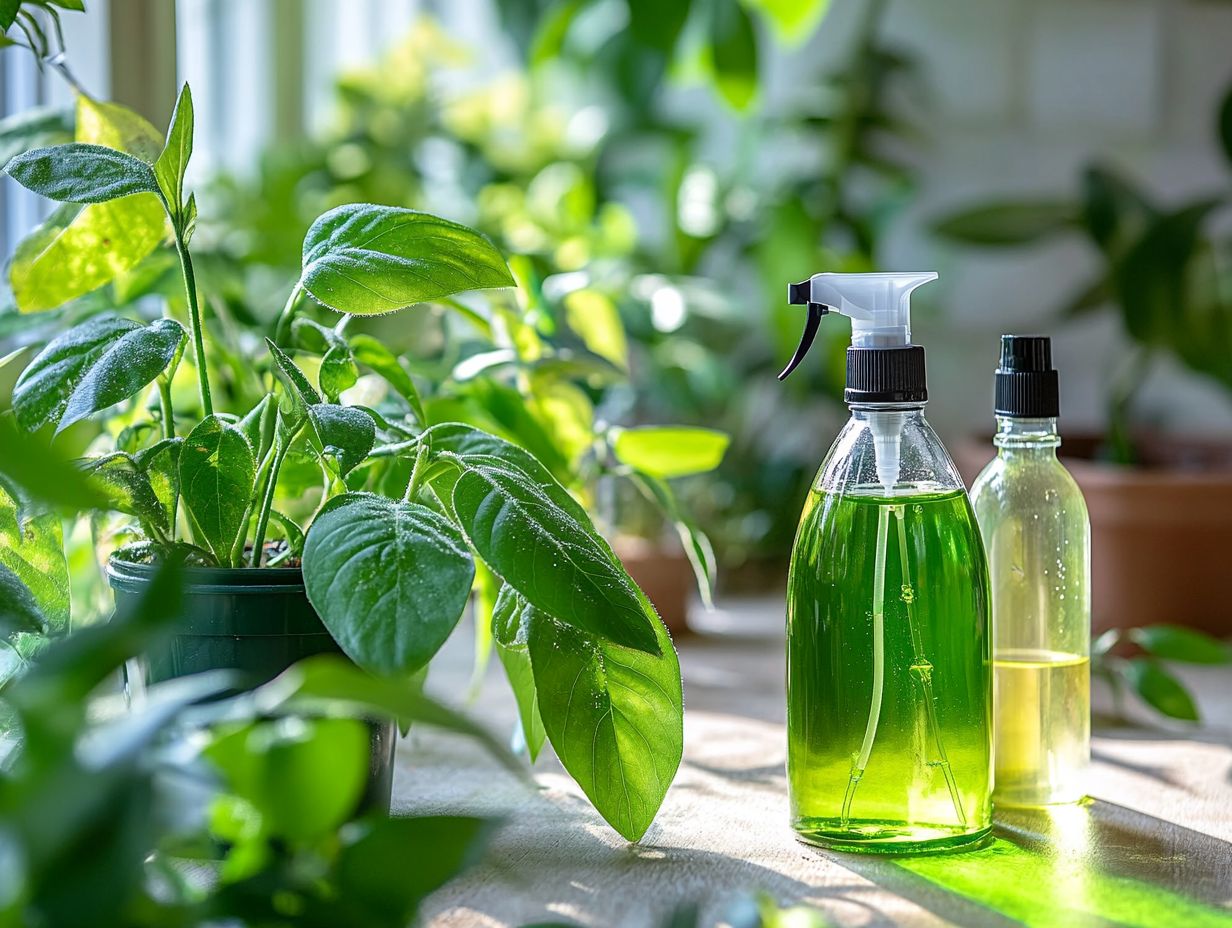
Recognizing the signs and symptoms of pest infestations can be your secret weapon in preserving your indoor plants. Early intervention often spells success in effective control. Keep an eye out for tiny webs spun by spider mites or sticky honeydew left behind by aphids. A decline in sap production due to mealybug invasions is also a warning sign.
Yellowing or wilting leaves may signal a larger issue, often tied to sap-sucking pests that drain vital nutrients. Pay attention to small, dark spots on the foliage they could indicate the presence of fungal diseases often worsened by pests. An unexpected drop in flowers or buds might suggest a hidden invasion, as many insects disrupt normal growth patterns.
If you notice unusual leaf shapes or distortions, it could be a sign of thrips at work, feeding directly on plant tissue. The impact of such infestations poses an immediate threat to your plants’ health and can lead to long-term damage if not addressed swiftly.
Preventing Indoor Plant Pest Infestations
Preventing indoor plant pest infestations is key to growing a thriving indoor garden. You have many strategies you can use to mitigate risks.
By implementing effective pest prevention practices like quarantining new plants, introducing beneficial insects like ladybugs, and utilizing natural pest solutions, you can elevate your indoor plant care routine. To further enhance your efforts, learn how to identify common indoor plant pests. These measures will fortify your plants and create an unwelcoming environment for pests.
Tips for Keeping Pests Away
Keeping pests away from your indoor plants requires a thoughtful approach that combines various pest control methods. Utilizing neem oil and insecticidal soap, a natural pesticide derived from plant oils, can effectively reduce the chances of infestations.
Incorporating preventative measures, such as ensuring proper air circulation and maintaining optimal humidity levels, is crucial for creating an environment unwelcoming to pests. Regularly inspecting your plants for signs your indoor plant has pests allows you to address potential issues before they escalate. Employ barriers like row covers or sticky traps for extra defense.
Consider introducing beneficial insects like ladybugs, which can help manage pests naturally. You might also explore top natural remedies for houseplant pests if you prefer more eco-friendly options. If you choose synthetic methods, targeted insecticides designed for indoor use can be effective. Always follow safety guidelines closely to protect your plants and household members.
Treating Indoor Plant Pest Infestations
Addressing indoor plant pest infestations demands a well-rounded strategy, especially against notorious culprits like spider mites and mealybugs.
Act quickly to manage spider mite outbreaks and tackle mealybug issues by employing potent pest control methods like insecticidal soap and neem oil. This ensures the continued health and vitality of your cherished indoor plants.
Effective Pest Control Methods
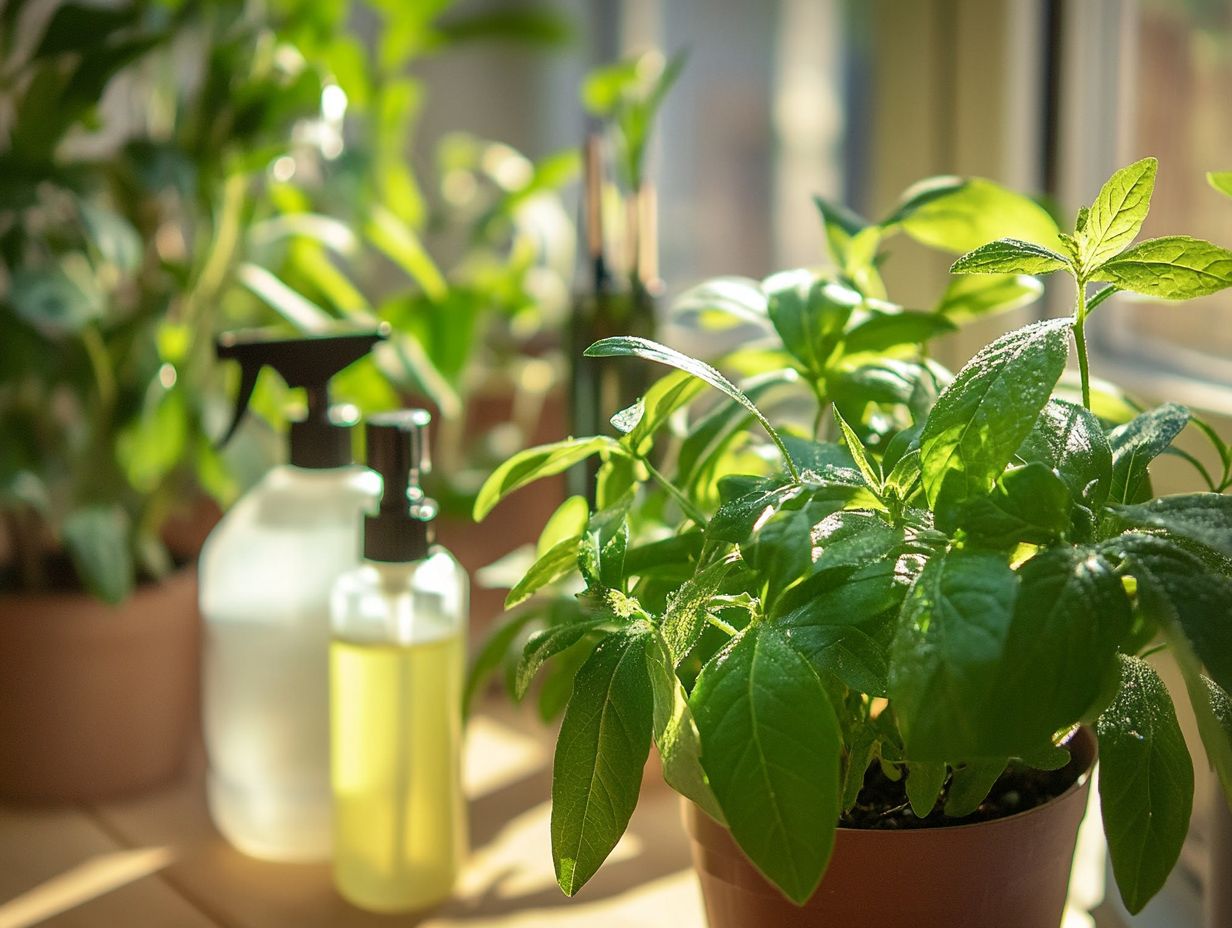
Effective pest control methods are essential for safeguarding your indoor plants against infestations, especially when facing persistent threats like spider mites and mealybugs. Embracing natural pest solutions, such as neem oil and insecticidal soap, allows you to treat these common houseplant pests effectively.
While natural treatments are often preferred, many also consider chemical options. These can be effective but may carry health risks and raise environmental concerns. Weigh the pros and cons of synthetic pesticides against organic solutions before making a choice.
Ensuring safe application is crucial. Always adhere to the manufacturer s instructions and consider wearing protective gear. Conducting a spot test on a small area of your plant can help prevent widespread damage when using strong pesticides.
By understanding the strengths of each method, you can develop a bespoke pest control strategy that allows your plants to thrive without unnecessary harm.
Regularly check your plants for signs of pest activity, and consider following the guidelines shared here for an effective indoor garden.
Dealing with Recurring Infestations
Dealing with stubborn pests can be frustrating, but it doesn’t have to be! Understanding the underlying causes and adopting ways to prevent pests over time can significantly alleviate these challenges.
By introducing beneficial insects and helping your plants stay healthy, along with effective pest control methods, you can cultivate a resilient indoor garden that reduces the likelihood of recurring pests.
Ways to Prevent Pests Over Time
Employing long-term prevention strategies is crucial for maintaining the optimal health of your indoor plants and ensuring that pest infestations don t become a recurring issue.
By focusing on pest control methods that enhance plant vitality and incorporating beneficial insects, you can significantly contribute to pest prevention in your indoor garden.
These approaches also include regularly monitoring and assessing the condition of your plants. This practice is vital in spotting potential problems before they escalate.
Establishing a routine to check for signs of stress or pest activity encourages a proactive care environment. Understanding the specific needs of different plant types enables you to tailor your care effectively, such as adjusting humidity levels and ensuring sufficient light exposure. You might also consider learning how to use neem oil for indoor plants to manage any pest issues that arise.
Utilizing organic pest repellents can also act as a gentle deterrent that enhances these ongoing strategies. By prioritizing a holistic approach to plant care and pest prevention, you can greatly diminish the likelihood of infestations and promote long-term health in your indoor garden.
Frequently Asked Questions
What are common signs of an indoor plant pest infestation?
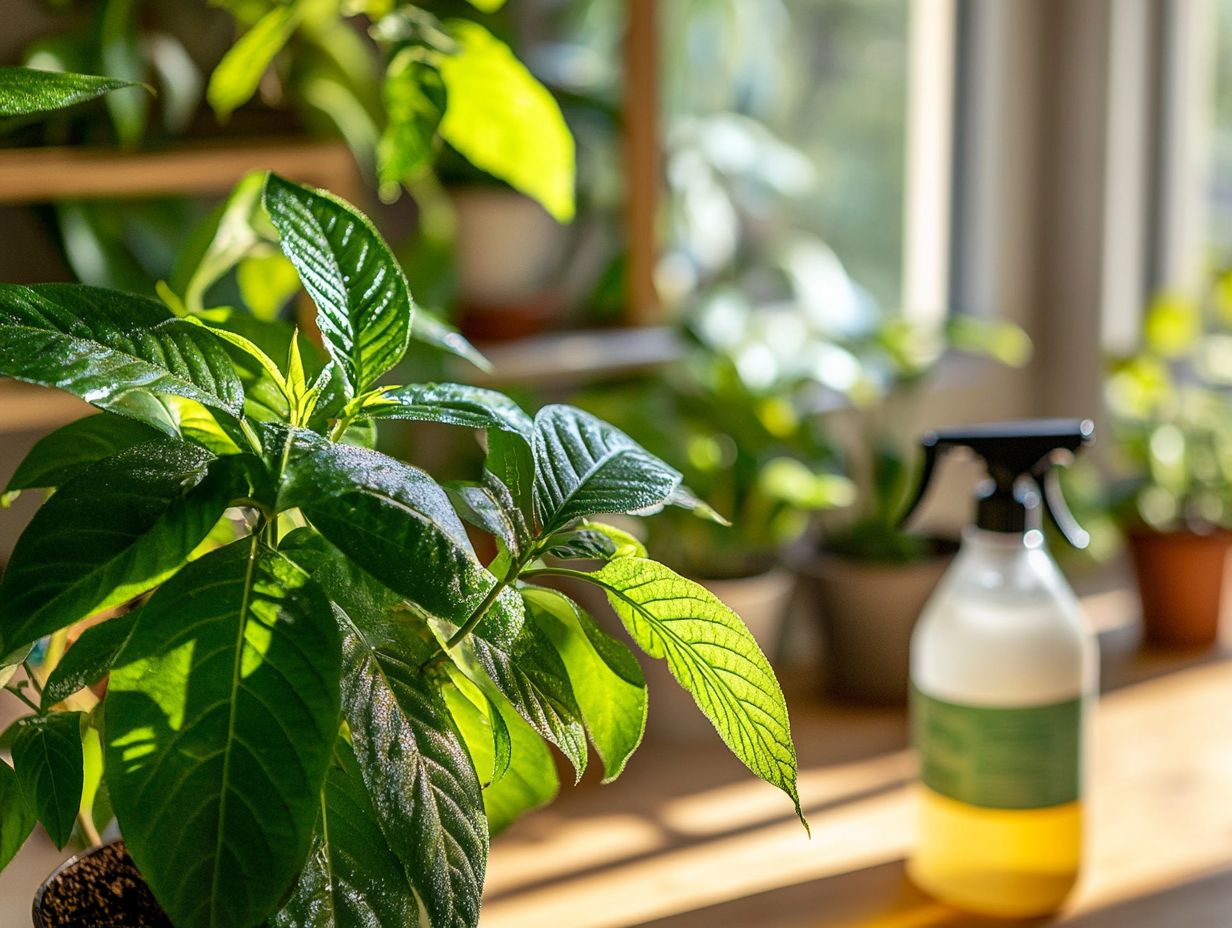
Some common signs of an indoor plant pest infestation include yellowing or wilting leaves, stunted growth, visible pests on the plant or soil, and small holes or bite marks on the leaves.
How can I prevent indoor plant pest infestations?
To prevent indoor plant pest infestations, it is important to regularly inspect your plants for signs of pests, including common houseplant pests. Avoid overwatering and overcrowding, and quarantine plants before introducing them to your existing plants.
What are some natural methods for handling indoor plant pest infestations?
Natural methods for handling indoor plant pest infestations include introducing beneficial insects like ladybugs and lacewings, using neem oil or insecticidal soap, and regularly wiping down leaves with a mixture of water and mild dish soap.
What should I do if my indoor plant is infested with pests?
If your indoor plant is infested with pests, such as fungus gnats or thrips, it is important to act quickly. Remove any heavily infested plants from the rest of your collection and treat spider mites and other infestations using natural or chemical methods.
Can I use chemical pesticides to handle indoor plant pest infestations?
Yes, chemical pesticides can be used to handle indoor plant pest infestations, but it is important to carefully read and follow the instructions on the label. Be aware that these pesticides can also harm beneficial insects and may require multiple applications.
How can I prevent indoor plant pests from spreading to my other plants?
To prevent indoor plant pests, like mealybugs and whiteflies, from spreading to your other plants, regularly inspect and isolate new plants before introducing them to your collection. You can also use natural methods, such as introducing beneficial insects, to keep pest populations under control and promote plant health.

